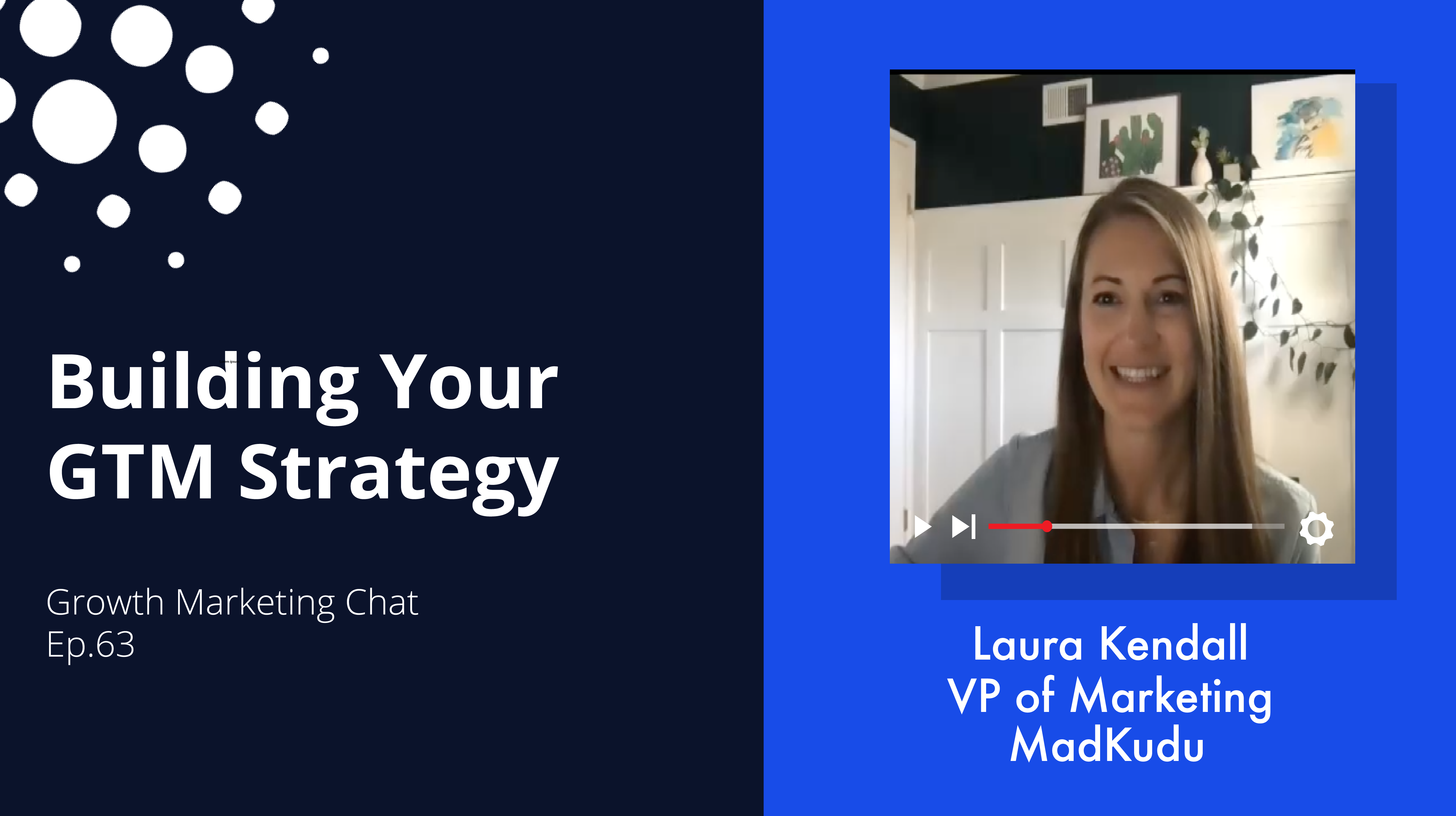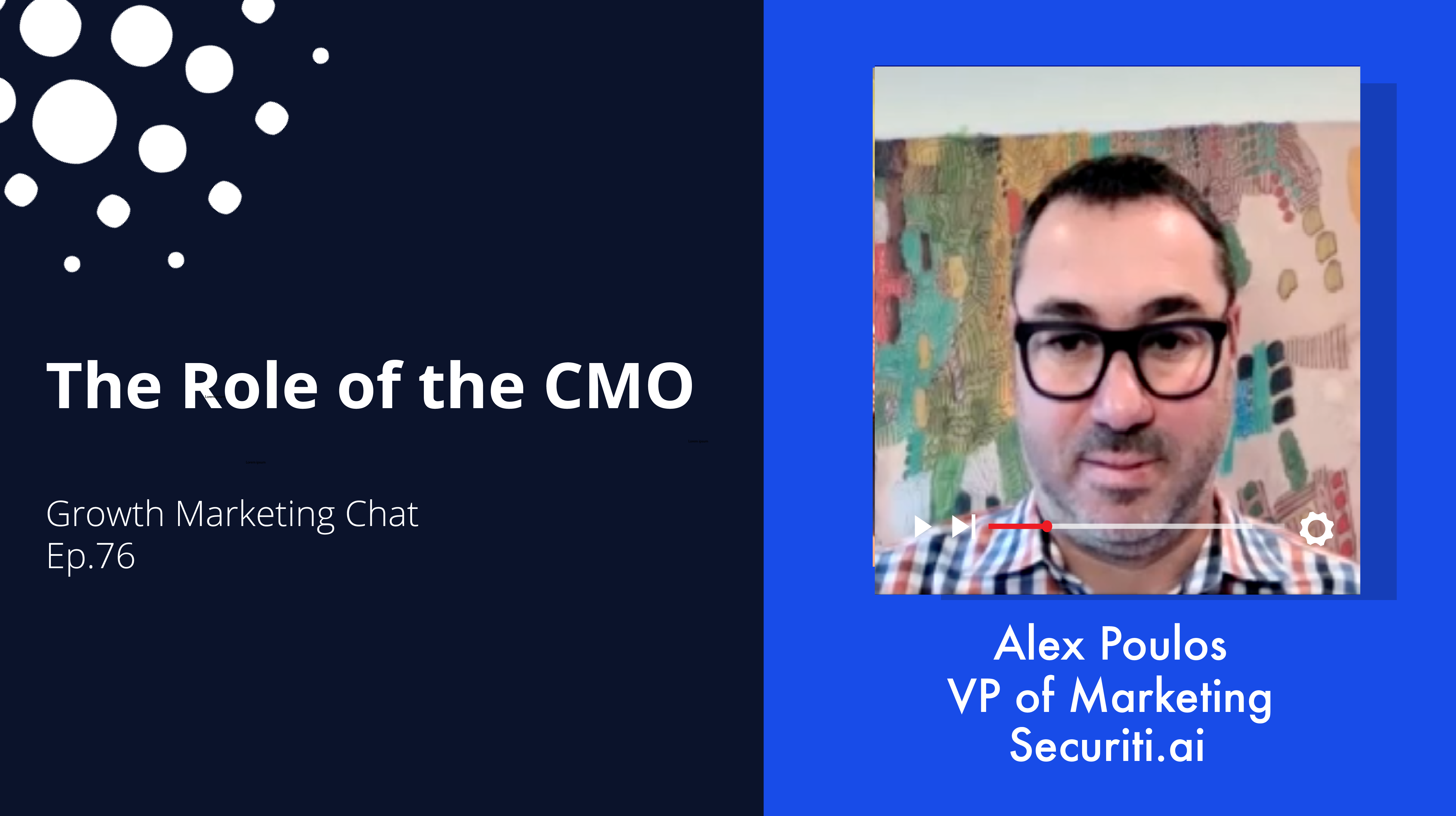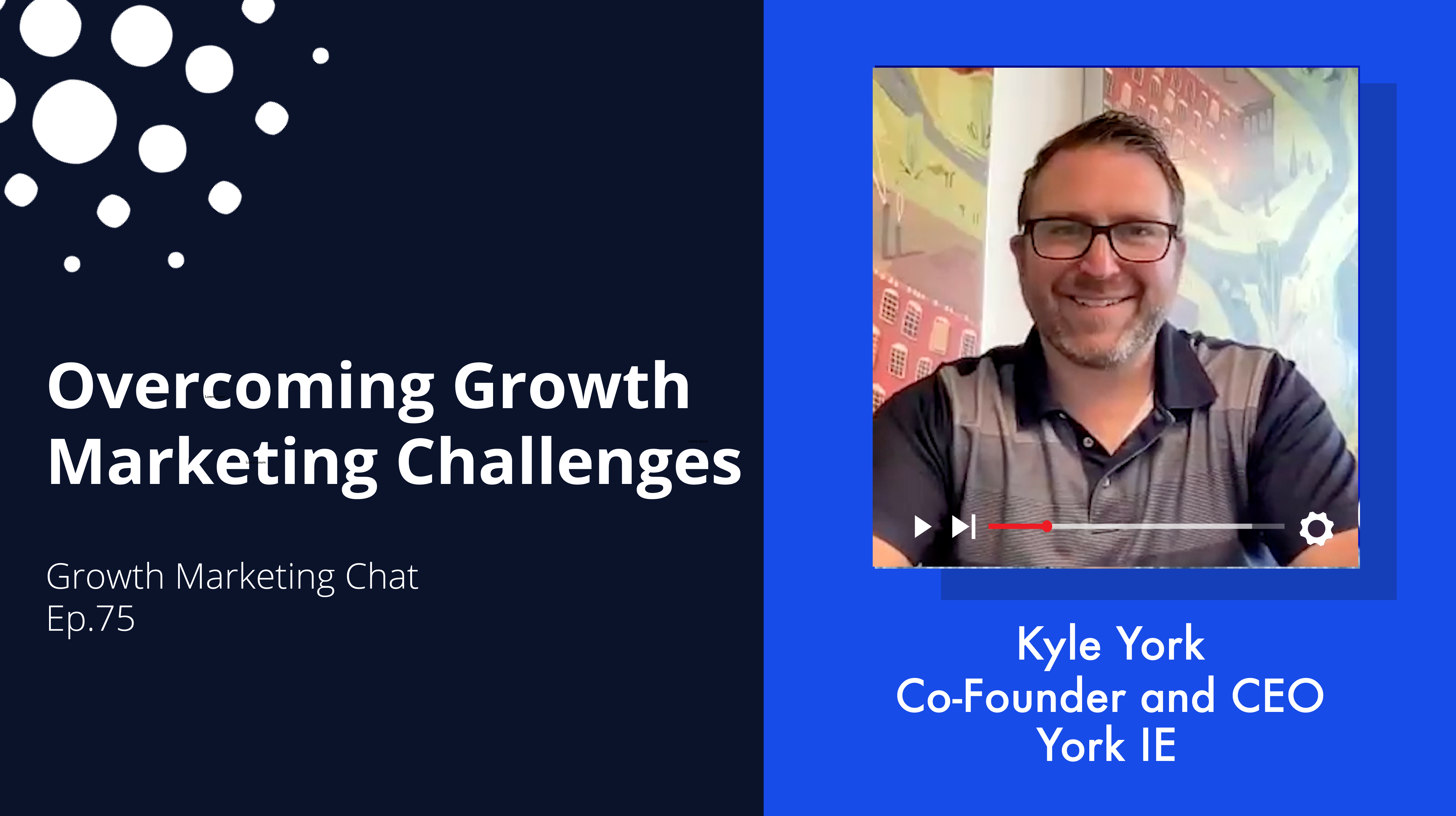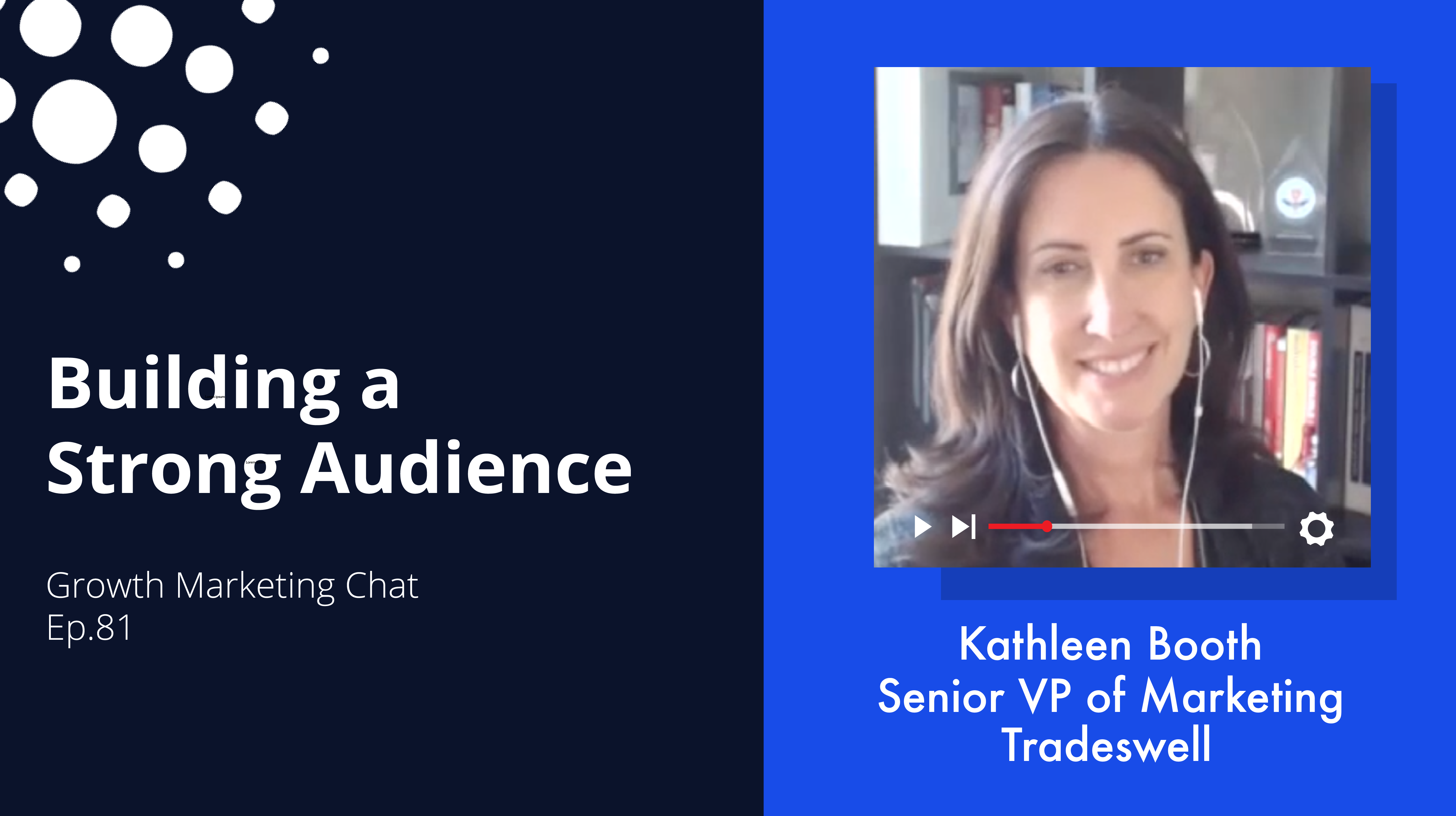Did you know that it takes an individual only 0.05 seconds to form an opinion about your website, including deciding whether they will stay or leave?
This means you have 50 milliseconds to make a good first impression on all of your website visitors, which relies heavily on your branding and overall marketing strategy.
If you’re building a growth marketing strategy from scratch or if you need to pivot an existing one, we’ve got the perfect video for you.
This latest episode of our Growth Marketing chat features Cassandra Karnick, Marketing & Brand Manager at ConverSight.ai, who shares her approach to building a marketing strategy from scratch or evolving an existing strategy to ensure your company is set up for success.
3 Main Pillars for Evolving Your Marketing Strategy
Cassandra divides her advice into 3 main pillars:
- Competitive Analysis: conduct in-depth research about the competitive landscape to help inform your marketing strategy. Aim to understand who your competitors are, what they are offering, who their buyers are and what their strategies may be.
- Positioning: your messaging should be unique and paint your product or service as the one and only option in the marketplace. Be sure all content focuses on the solution your product solves and how it is unique and different from your competitors.
- Brand Identity: your brand should tell a story about your company. Establish a brand that your ideal consumers can relate to, and incorporate this consistent branding experience into all messaging and content marketing.
This 5-minute interview is full of actionable insights, regardless of the status of your existing marketing plan. Tune in now to make sure you’re setting your company up for success!
Video Transcript:
CAROLINE: Hi, today I’m here with Cassandra Karnick. She’s a demand gen marketer with a rich B2B SaaS background and she’s the Marketing and Brand Manager at ConverSight.ai. Cassandra, thank you so much for being with us today.
CASSANDRA: Thank you for having me.
CAROLINE: So, anybody that has to kind of build a marketing organization from the ground up know that it’s not easy, and also, you’re never done learning. So, I think anybody that is in this position will really enjoy our show today. So, Cassandra, you’ve built a marketing organization from the ground up. I’d love to have your insight on how to approach this and how to keep evolving your marketing strategy over time.
CASSANDRA: Absolutely. And I think, you know, the cool thing about this specific topic is it’s so applicable to everyone. Whether they’re building a new marketing, a marketing strategy from the ground up, or they’re just needing to pivot, as you mentioned, marketing is a constantly changing thing. You’re constantly having to go back to the drawing board. So, I think I can structure this around three key building points. If you think of, you know, building a house, you need to lay that foundation. And there are three blocks that I think are really critical for that.
The first one is being, you know, researching your competitive landscape. I can’t tell you how long I spent at the very beginning of my role at ConverSight, just researching and reading, trying to get a hold on, you know, the competitors that we’re lining up against. Defining those competitors. Who are they? What similar products are out there that are being used by our audience? And what makes our product unique from theirs? So, to do that, you know you always constantly have to keep a pulse on your competitors, emerging players, and acquisitions. That’s a huge piece in the SaaS world. And that will, you know, constantly inform you about how you should pivot your strategy, tweak it, or, you know, when it’s time to launch a new campaign.
The next thing I think is to identify your personas within those competitors. So, I’m really looking at who these people are, at the very core of who they are and that’s really gonna come into play when you’re advertising, when you’re building your messaging. And that’s just another key component of that research that you need to do.
The second building block I think would be to define your position. So, within your market, what hill are you going to plant your flag on? You have to own your hill. So, to do that, you don’t want to be too broad, and encroach on other people’s hill. You want to have your own hill to yourself, and you want to plant that flag firmly on that hill. If you’re too narrow, you’re probably missing out on another opportunity, and it’s not scalable. So, to do that, you want to look back at your product for what it is, what are the features specifically to that product that are unique for your product? And then what are the advantages to your customer of those features? What pain points are those features addressing? And then benefits. What at the end of the day is, is your product doing for that customer for the long haul? And what’s going to make that customer stay with you?
So, to do, to do that, to claim your hill, to plant your flag on it, you have to double down. And I know for, for ConverSight, we doubled down on a specific vertical or a specific industry, and we became really focused and specialized in that vertical industry. And now what we’re doing a year later is, you know how do we become the best in that vertical? Because you really have to establish yourself as the best in that hill before you can look at the next hill. And then that is just a vertical jump.
The third building block is brand identity. You know, in marketing we’re constantly talking about brand. People have their own brand, companies have their own brand, and especially for a startup, it is so critical to establish that brand early on, you know, research shows that it takes 0.05 seconds for someone to form an opinion about your company based just on your website. So that’s not a lot of time to, to prove who you are and to prove your value, especially when you’re a new player. So, you know, no matter what kind of business you’re marketing for, every business needs a steady, very unique identity that everyone can identify with to boost brand identity, boost recognition, and to essentially build that story behind your brand. That story, no matter what you’re selling, is also very critical because everything you build in the company should be drawn back to that story. Everything from, you know, the actual appearance of your logo, or your website, the buyer journey, the way that your sales team is selling that product, it should all kind of be tied into the same story for that consistency.
CAROLINE: Right! Well, Cassandra, thank you! I think this was, this was a really structured answer. So, thank you for this. And you know, I think what’s really interesting is that you go from like really understanding your market, you decided where you are to actually building your brand, and as you said, right, point five seconds is nothing. You really need to like master the two first steps to make sure that the third step is going to be appropriate, so that you can leverage this very little time that you have to convince your prospect that you’re worth the attention, you’re worth their time.
CASSANDRA: Absolutely. And you know, now, a lot of what you’re doing is solely digital. We’ve lost a lot of that one-to-one contact, that human touch. So, a lot of marketers like myself, have had to go back to the drawing board and figure out ways to, you know, have your business and your messaging still resonate to your buyers, but on a completely digital basis.
CAROLINE: Right. Right. Exactly. Alright. So, thank you so much for joining us and sharing your insights today.
CASSANDRA: Wonderful! Thank you so much for having me.





